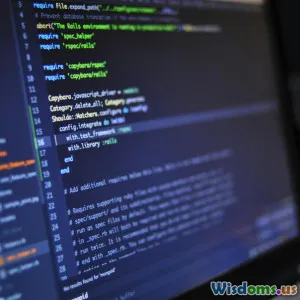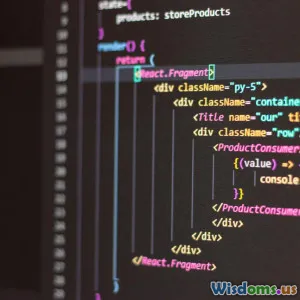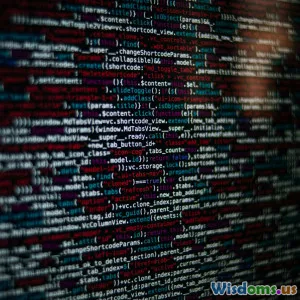
Exploring the World of Data Science
7 min read Dive deep into data science: its tools, impact, and future in modern technology. (0 Reviews)
Exploring the World of Data Science
Introduction
In an era where data drives innovation, decision-making, and competitive advantage, understanding the world of data science is more critical than ever. From predicting consumer trends to optimizing healthcare outcomes, data science has emerged as a linchpin in transforming raw data into meaningful insight. But what exactly is data science, and why does it command such importance in today’s technological and programming landscapes?
This article embarks on an enlightening journey into the realm of data science—breaking down its fundamentals, tools, real-world applications, and future trajectory. Whether you’re a curious student, an aspiring programmer, or a business leader seeking to leverage data, this guide offers valuable insight and actionable knowledge.
What is Data Science?
Data science is an interdisciplinary field that uses scientific methods, algorithms, and systems to extract knowledge and insights from structured and unstructured data. It combines statistics, computer science, mathematics, and domain expertise to analyze raw information and turn it into clear, actionable intelligence.
Prominent computer scientist DJ Patil famously dubbed data scientist as “the sexiest job of the 21st century,” underscoring its rising significance. Indeed, the explosion of data generation—with over 2.5 quintillion bytes created daily as per IBM—has propelled data science to the forefront of problem-solving across sectors.
Core Components of Data Science
1. Data Collection and Cleaning
The first essential step involves gathering data from various sources: databases, APIs, IoT devices, social media, and more. However, real-world data is messy and often incomplete—introducing the need for cleaning processes such as handling missing values, outlier detection, and normalization.
Example: A healthcare provider collates patient records, but incomplete information about symptoms requires preprocessing to ensure accurate disease prediction.
2. Data Exploration and Visualization
Exploratory Data Analysis (EDA) is vital to understand patterns, relationships, and distributions in data. Visualization tools like Matplotlib, Seaborn, and Tableau help convert complex datasets into interpretable graphs and charts.
Insight: Netflix uses data visualization extensively to analyze viewer habits, guiding content recommendations.
3. Statistical Modeling and Machine Learning
This phase leverages algorithms to develop predictive or descriptive models. Depending on the task, data scientists apply:
- Supervised Learning: Techniques like regression and classification (e.g., predicting house prices or email spam detection).
- Unsupervised Learning: Clustering and dimensionality reduction for grouping or data compression.
- Reinforcement Learning: Systems learn by interacting with an environment, such as robotics or game AI.
4. Evaluation and Deployment
Models must be rigorously tested using metrics like accuracy, precision, recall, or F1 score. Deployment involves integrating models into production environments—often requiring collaboration with software engineers.
Case Study: Amazon’s recommendation engine continuously retrains models based on buyer behavior to maintain relevance and increase sales.
Essential Tools and Programming Languages
Programming Languages
- Python: Dominant in data science for its readability and extensive libraries like Pandas, NumPy, Scikit-learn, TensorFlow, and PyTorch.
- R: Highly favored in academia and statistics-focused research.
- SQL: Crucial for database querying.
Platforms and Libraries
- Jupyter Notebooks: Interactive coding environment for prototyping.
- Apache Hadoop & Spark: Handle massive datasets beyond traditional computer memory.
- Tableau & Power BI: Powerful visualization tools used to communicate results effectively.
Real-World Applications
Healthcare
Predictive models analyze medical images to detect cancer early. For instance, Google's DeepMind developed an AI system achieving expert-level accuracy in diagnosing eye diseases.
Finance
Banks employ data science for fraud detection by analyzing transaction patterns and predicting potential threats.
Retail
Walmart analyzes customer purchasing data to optimize inventory management and personalized marketing.
Transportation
Ride-sharing platforms like Uber use dynamic pricing and demand forecasting driven by complex data modeling.
The Future of Data Science
Advancements such as Automated Machine Learning (AutoML)—which streamlines model creation—are accelerating access to data science. Furthermore, ethical AI and explainability are gaining priority to ensure transparency and fairness.
Quantum computing is projected to revolutionize data processing speed, enabling handling previously insurmountable datasets.
According to IBM’s 2023 report, by 2025, demand for data science professionals will grow 28% annually, highlighting sustained relevance.
How to Start Your Journey in Data Science?
- Learn the Basics: Begin with statistics, Python, and data manipulation.
- Practice Projects: Work on datasets from platforms like Kaggle.
- Understand Domain Knowledge: Familiarity with industries heightens insight.
- Master Tools & Techniques: Progress with machine learning, visualization, and cloud computing.
- Collaborate & Network: Participate in data science communities.
Conclusion
Data science stands as a transformative force that harnesses the power of vast and varied data to solve real-world problems innovatively. Through a combination of technical prowess, analytical thinking, and domain understanding, data scientists unlock new insights that power cutting-edge applications from healthcare to finance.
Aspiring professionals equipped with a diverse skill set and a curiosity-driven mindset can seize unprecedented opportunities in this burgeoning field. Exploring the world of data science is not just about mastering code and algorithms—it’s a dynamic journey to influence the future of technology and society.
Ready to dive in? Start experimenting with datasets today—each byte holds the potential to revolutionize tomorrow.
Rate the Post
User Reviews
Popular Posts





















